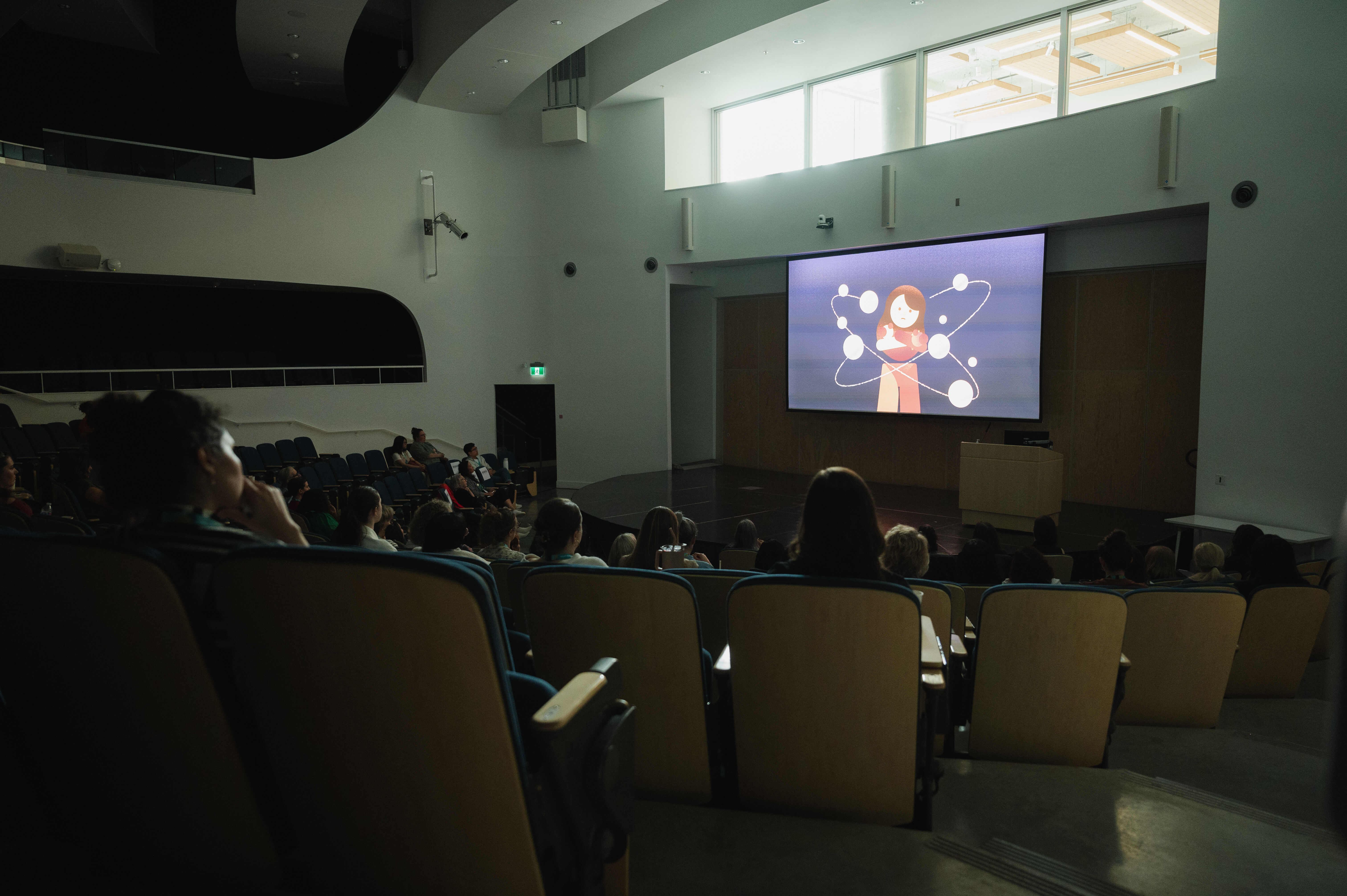Uniting Designers and Storytellers to Discuss Mental Health Stigma

Families United video project screening event on June 5, 2024 (Photo Credit Tamara Chang)
Posted on
Members of the Health Design Lab joined BC Mental Health and Substance Use Services at an event to celebrate their video series collaboration and discuss the impacts of the project on those involved.
Stigma is a pervasive issue that significantly impedes individuals from pursuing mental health or substance use care, preventing them from receiving adequate support and healthcare or even from requesting help in times of crisis. Through the UNITE project, members of Emily Carr University of Art + Design’s (ECU) Health Design Lab (HDL) and Communication Design program have partnered with BC Mental Health and Substance Use Services (BCMHSUS) to create a series of videos that share stories of people with lived experiences to help break down barriers and form connections to reduce mental health stigma.
With the first two parts of the Challenging Stigma Through Storytelling series complete and the third in production, we caught up with Katie Mai, who oversees UNITE at BCMHSUS, to discuss the project's impact ahead of their Families United: Celebrating Partnerships and Breaking Stigma in Mental Health and Substance Use Care event at ECU’s Reliance Theatre on June 5, 2024.
The videos in this series are not just about spreading awareness about stigma but also serve as active key educational pieces whose messages are reinforced through a guided dialogue after viewing.
“Storytelling, followed by dialogue, is evidenced to disrupt social stigma. This stigma is characterized by the attitudes, beliefs, and behaviours that are endorsed by the public and held by our culture,” says Katie. “When we start to reduce social stigma, we will see shifts in structural stigma over time. This stigma is institutionalized and dictates how our policies are written – for example, who is hired and not hired, how people access supports such as housing, and more.”

Director of Patient Experience and Engagement at BCMHSUS, Katie Mai (Photo Credit Tamara Chang)
The collaboration between BCMHSUS and the HDL led to a unique approach to developing the video series. Both teams had to let the process evolve on its own and ultimately ended up being guided by the storytellers, who were the main subjects of the videos.
“What I learned was just the beauty of co-design and letting things unfold as they will,” says Katie.
“The storytellers really ended up dictating everything from the animation to the colour and the visuals, to the themes that come forward. And then after they were done, how they want the dialogue to be facilitated and what themes they would like to prompt for reflection.”
When asked to comment on the value of partnering with organizations like BCMHSUS on real-world projects, Caylee Raber, director of the HDL, added:
“Creating opportunities for students to work directly with people with lived experience enables them to expand their understanding of co-design and trauma-informed design in context, preparing them to work in health and community contexts post-graduation. Through this work, we have learned a lot about the care and attention required to bring students and people with lived experience together for impactful and supported trauma-informed co-design.”

ECU Associate Professor of Communication Design Jon Hannan discusses the project with the panel. (Photo Credit Tamara Chan)
At the Families United: Celebrating Partnerships and Breaking Stigma in Mental Health and Substance Use Care event at ECU’s Reliance Theatre on June 5, after the screening and celebration of part two of the video series — Family United — designers from the HDL were joined on stage by storytellers and other experts of lived experience who participated in the project. Among their discussions on the panel were their takeaways from working together on the video series.
“It reinforced to us how important it is to co-design with people with lived experience,” says ECU Associate Professor of Communication Design Jon Hannan. “There was a clear gap in lived experiences of the design team and that of the storytellers. The Strategic Advisors were amazing in bridging that gap, which brought confidence to the design team that they could proceed without causing unintended harm and reassured the storytellers that their experiences were being handled by people who could more directly relate to their story.”
Jon adds that the process was streamlined through preparations that involved accounting for the safety and inclusion of everyone involved.
“We knew that the process could be difficult and that there was associated trauma for our co-designers in sharing their stories. With this in mind, we prioritized thorough preparation, support, communication, ownership of materials and care through all stages of the process.”
Projects like Challenging Stigma Through Storytelling exemplify how we can work with partners to develop care-driven, creative solutions and drive change for the betterment of our communities.
Visit BCMHSUS online to learn more about the UNITE program and to watch the video series Challenging Stigma Through Storytelling.
Visit the Health Design Lab online to learn more about their work on Challenging Stigma Through Storytelling and their other extraordinary initiatives.
